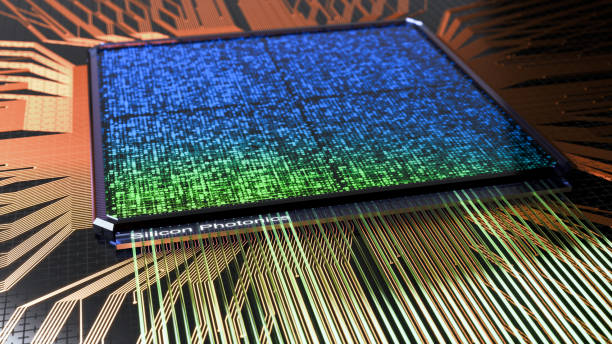"The Intricacies of Photonic Computing: A New Horizon in Data Processing"
Step into a world where data travels at the speed of light. Photonic computing, the technology that leverages light particles (photons) for data processing, is poised to illuminate the future of computing. The idea of using light for computing isn't new. As far back as the 1960s, scientists began to explore the possibility of using photons instead of electrons for data processing. The fundamental principle behind photonic computing is simple: Light travels faster than electricity. By harnessing this speed, data processing capabilities could be boosted exponentially.

Early experiments with photonic computing were promising, but the technology was far from ready for mainstream use. The major hurdle was the absence of practical, cost-effective ways to generate, manipulate, and detect photons at the nanoscale.
Milestones and Breakthroughs: Photonic Computing Comes of Age
The turn of the century brought significant advancements in nanotechnology and material science. These developments unlocked new possibilities for photonic computing.
In 2015, researchers at the University of Colorado Boulder made a breakthrough, developing the world’s first fully photonic microprocessor chip. The chip, which used light to transfer data, marked a significant step towards practical photonic computing.
In 2020, another milestone was reached when researchers at the Massachusetts Institute of Technology (MIT) demonstrated a fully integrated photonic circuit. The circuit, made from a silicon-based material, could generate, guide, and detect light, all on one chip.
The Present and Future: Photonic Computing in Today’s World
Photonic computing is on the cusp of becoming a reality. Tech giants, such as IBM and Intel, are investing heavily in photonic research. Intel’s recent development of a programmable photonic processor is a testament to the technology’s potential.
The implications of photonic computing are immense. With data travelling at light speed, the technology could revolutionize everything from high-frequency trading to artificial intelligence.
The Price and Impact: Photonic Computing in the Market
As revolutionary as photonic computing may be, it’s still in the early stages of development. While it’s difficult to estimate the price range of photonic processors, experts predict that they’ll initially be more expensive than their electronic counterparts. However, as production scales and technology matures, prices are expected to drop.
The impact of photonic computing could be dramatic. As data continues to grow in importance, the ability to process it faster and more efficiently can provide a significant competitive edge. The advent of photonic computing could also spark a new wave of innovation in sectors such as healthcare, finance, and telecommunications.
The Dawn of a New Era
Photonic computing represents a paradigm shift in data processing. It offers a tantalizing glimpse into a future where data travels at light speed. While there are still challenges to overcome, the field is ripe with potential. As research continues and the technology matures, photonic computing could well illuminate the path to a new era in computing.




